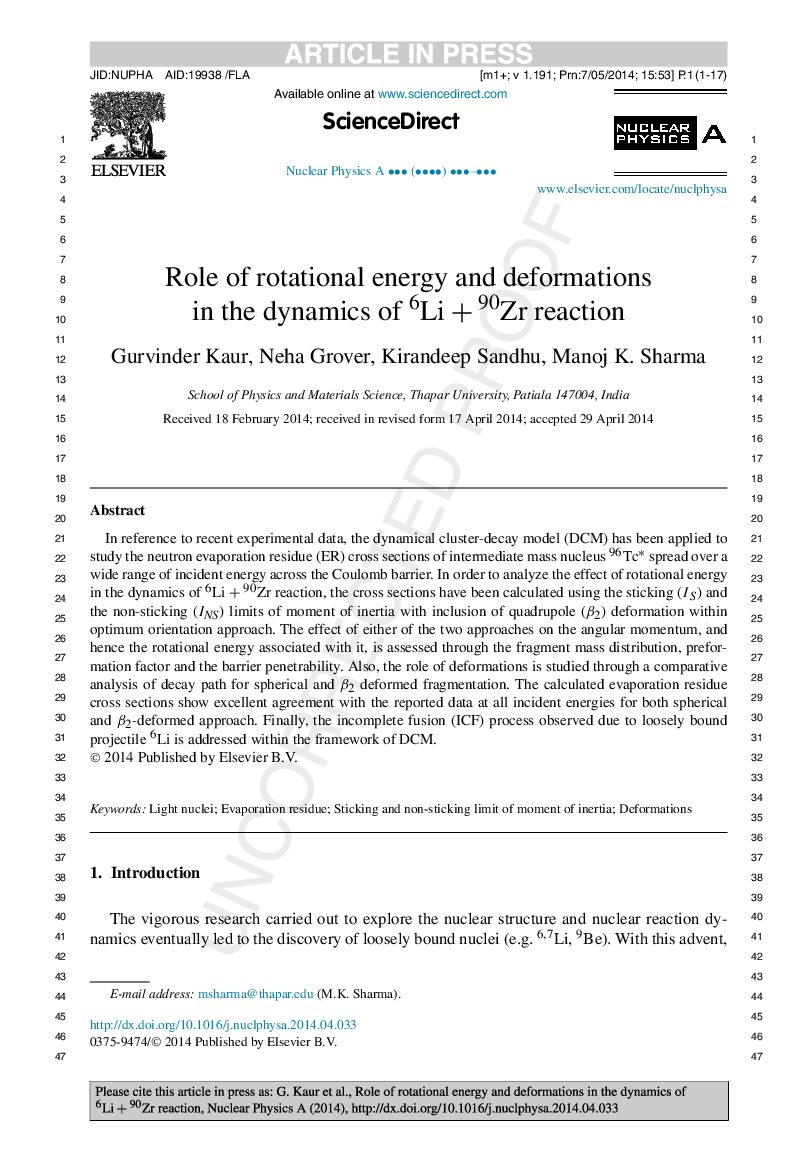| Article ID | Journal | Published Year | Pages | File Type |
|---|---|---|---|---|
| 8183246 | Nuclear Physics A | 2014 | 17 Pages |
Abstract
In reference to recent experimental data, the dynamical cluster-decay model (DCM) has been applied to study the neutron evaporation residue (ER) cross sections of intermediate mass nucleus 96Tcâ spread over a wide range of incident energy across the Coulomb barrier. In order to analyze the effect of rotational energy in the dynamics of Li6+Zr90 reaction, the cross sections have been calculated using the sticking (IS) and the non-sticking (INS) limits of moment of inertia with inclusion of quadrupole (β2) deformation within optimum orientation approach. The effect of either of the two approaches on the angular momentum, and hence the rotational energy associated with it, is assessed through the fragment mass distribution, preformation factor and the barrier penetrability. Also, the role of deformations is studied through a comparative analysis of decay path for spherical and β2 deformed fragmentation. The calculated evaporation residue cross sections show excellent agreement with the reported data at all incident energies for both spherical and β2-deformed approach. Finally, the incomplete fusion (ICF) process observed due to loosely bound projectile 6Li is addressed within the framework of DCM.
Related Topics
Physical Sciences and Engineering
Physics and Astronomy
Nuclear and High Energy Physics
Authors
Gurvinder Kaur, Neha Grover, Kirandeep Sandhu, Manoj K. Sharma,
